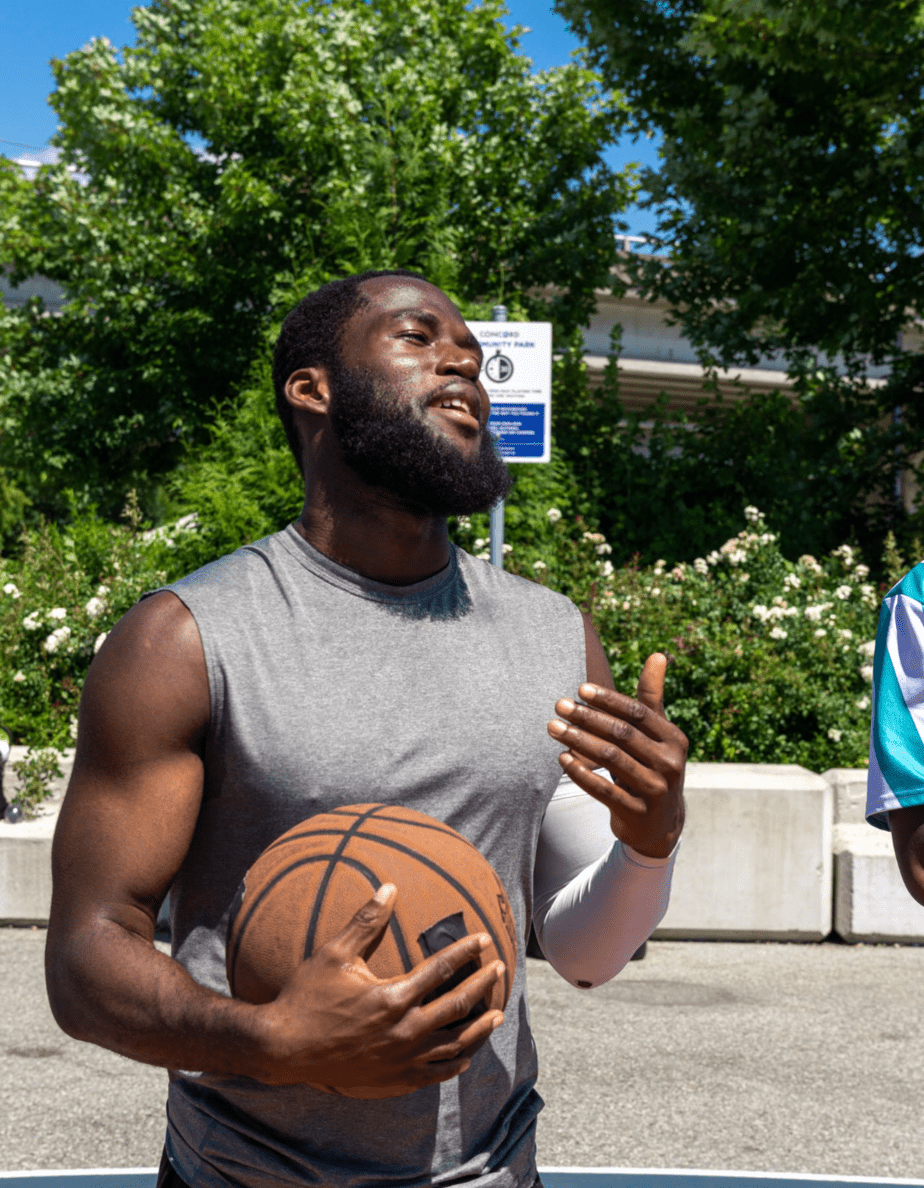How to Measure Skeletal Muscle Mass: DEXA, BIA, MRI, CT, and D3 Creatine
Have you ever wondered how much of your body is composed of muscle? More specifically, how to measure skeletal muscle mass? Skeletal muscle mass is a vital component of our body composition and plays an essential role in maintaining overall health and wellness. I knew it was important based on my previous research, but an episode of the Whoop Podcast with Dr. Gabrielle Lyon, a functional medicine physician specializing in muscle-centric medicine, which focuses on the muscle as the key organ of longevity, made me decide to take another look at it and try and find a way to measure my skeletal muscle mass.
In this blog post, I will uncover my research on what skeletal muscle mass is, its importance, and different ways to measure it accurately.
Understanding the Basics of Skeletal Muscle Mass
Before we delve into the measurement process, it’s important to understand what skeletal muscle mass entails. As the name suggests, skeletal muscles are those which attach to the bones and help us perform various movements. However, when we talk about muscle mass, we’re referring to the size and quantity of these muscles.
This should not be confused with fat mass or lean body mass, which includes organs, bones, and other tissues. Skeletal muscle mass specifically focuses on the muscles involved in voluntary movements.
Importance of Measuring Skeletal Muscle Mass
Knowing your skeletal muscle mass is more than just an interesting statistic. It is closely tied to your metabolism, fitness level, and overall health. The higher your muscle mass, the higher your resting metabolic rate. This means you burn more calories even at rest, making it easier to maintain a healthy weight and body composition.
Additionally, with age, we naturally lose muscle mass, a condition known as sarcopenia. Regular monitoring of muscle mass can alert us to significant changes and allow for early intervention.
Different Methods of Measuring Skeletal Muscle Mass
Several methods can help you estimate your skeletal muscle mass, each with its unique advantages and considerations.
Dual-Energy X-Ray Absorptiometry (DXA)
DXA provides a detailed breakdown of bone mass, fat mass, and lean tissue mass. While it requires specialized equipment and trained professionals, it offers a highly accurate measurement. It is often referred to as a DEXA scan.
Bioelectrical Impedance Analysis (BIA)
With BIA, a small electrical current is sent through the body, and the impedance or opposition to the current flow is measured. It’s a quick and non-invasive method but can be influenced by factors such as hydration and recent food intake.
Magnetic Resonance Imaging (MRI) and Computed Tomography (CT)
These advanced imaging techniques offer the most precise measurements. However, due to their cost and the need for specialized equipment and trained technicians, they’re typically used for research rather than regular personal use.
Anthropometric Methods
These techniques use simple measures like skinfold thickness and circumference measures to estimate muscle mass. They’re less accurate but can still provide a useful estimate for most people.
D3-Creatine Dilution Method
The D3-Creatine Dilution method is a relatively new, non-invasive way to assess muscle mass. By administering a dose of deuterium-labelled creatine with a non-radioactive isotope and collecting a urine sample, it provides a measure of the total body creatine pool size, which correlates with muscle mass. In the interview, Dr. Lyon called this out as a major breakthrough in how to measure skeletal muscle mass.
It’s just very easy. It’s a capsule. It is not available to the public yet. But I believe it will be. And now, we are going to be for the first time ever able to directly measure skeletal muscle mass. The big thing here is that we are at the forefront of a new era.
Dr. Gabrielle Lyon, Whoop Podcast: Protein and Skeletal Muscle: The Keys to Longevity with Dr. Gabrielle Lyon
Tools and Equipment for Measuring Skeletal Muscle Mass
For methods like DXA, BIA, MRI, and CT, you will need access to specialized equipment, usually found in a clinical or gym setting. However, anthropometric measures can be taken at home with simple tools like measuring tape and skinfold calipers.
The D3-Creatine Dilution test kit can be purchased for home use and includes the necessary supplement and urine collection equipment but these are not yet available publically. The sample will still need to be sent to a lab for analysis.
The advantage of this methodology is that it requires only a single dose of D3-creatine followed by a single spot urine sample 48-72 hours later.
Use of the D3-creatine dilution test as a non-invasive and accurate measurement of total body muscle mass in Duchenne muscular dystrophy
How to Interpret Results from Muscle Mass Measurements
Understanding the results of these measurements can help you make informed decisions about your health and fitness routine. Remember, values can vary based on age, sex, and activity level. So, your muscle mass should be compared to normative values for your demographic.
Skeletal Muscle Percentages By Age and Gender
| Gender | Age | Low | Normal | High | Very High |
|---|---|---|---|---|---|
| Female | 18-39 | < 24.3 | 24.3 – 30.3 | 30.4 -35.3 | ≥ 35.4 |
| Female | 40-59 | < 24.1 | 24.1 – 30.1 | 30.2 – 35.1 | ≥ 35.2 |
| Female | 60-80 | < 23.9 | 23.9 – 29.9 | 30.0 – 34.9 | ≥ 35.0 |
| Male | 18-39 | < 33.3 | 33.3 – 39.3 | 39.4 – 44.0 | ≥ 44.1 |
| Male | 40-59 | < 33.1 | 33.1 – 39.1 | 39.2 – 43.8 | ≥ 43.9 |
| Male | 60-80 | < 32.9 | 32.9 – 38.9 | 39.0 – 43.6 | ≥ 43.7 |
If you find your muscle mass is below average, don’t worry. There are numerous ways to improve it.
Tips and Strategies to Increase Skeletal Muscle Mass
Here are some strategies to increase your skeletal muscle mass:
- Diet: Include sufficient protein in your diet to support muscle growth and repair.
- Resistance Training: Engage in regular strength training exercises to stimulate muscle growth.
- Rest and Recovery: Ensure you’re getting adequate rest between training sessions for optimal muscle recovery and growth.
- Supplements: Certain supplements may aid in muscle growth, but it’s always best to consult with a healthcare provider before starting any new supplement regimen.
Conclusion
Understanding and maintaining your skeletal muscle mass is an essential part of managing your overall health. Whether you opt for high-tech solutions like DXA or prefer simpler methods, regularly measuring your muscle mass can help you stay on top of your health and fitness goals.
Start tracking your muscle mass today, and remember, small consistent changes often lead to significant results over time.

Troy Wallace
Troy Wallace is Certified Basketball Speed Specialist and shares his experiences in trying to stay as healthy as possible to stay on the court. He is active in coaching youth basketball in YMCA, Team Work Sports Nebraska, and, currently, in the Jr. Warriors program in Omaha, NE. Visit Troy's Full Author Bio Page or email him directly.
Meaningful conversations happening daily about training, recovery, and injury-specific rehabilitation as well as sport-specific discussions on playing, coaching and refereeing your favorite sport. We welcome experts and those with curious minds seeking answers.
Join The Stay On The Court Community!